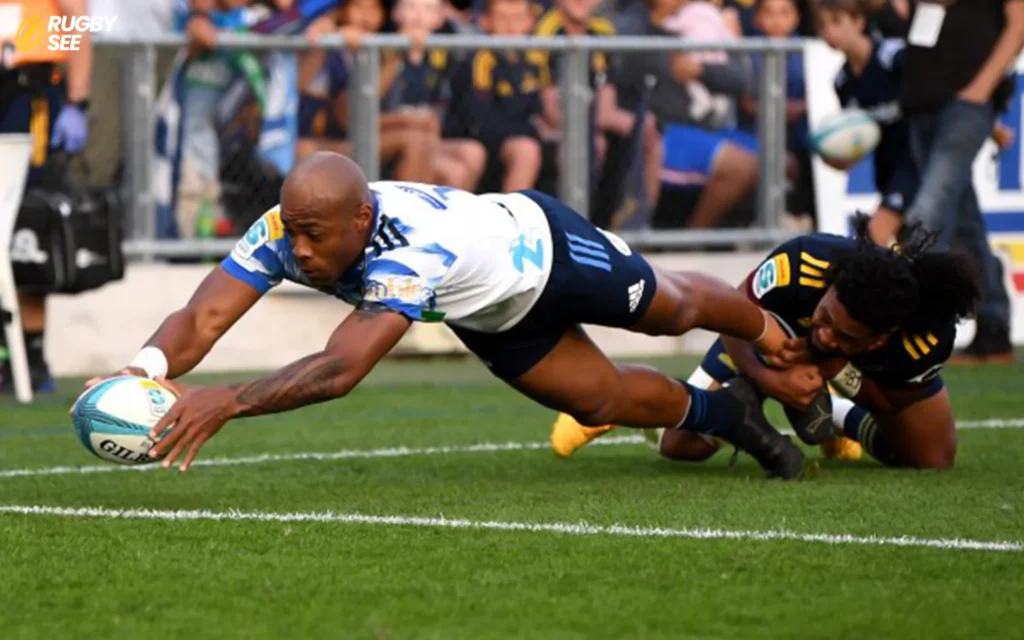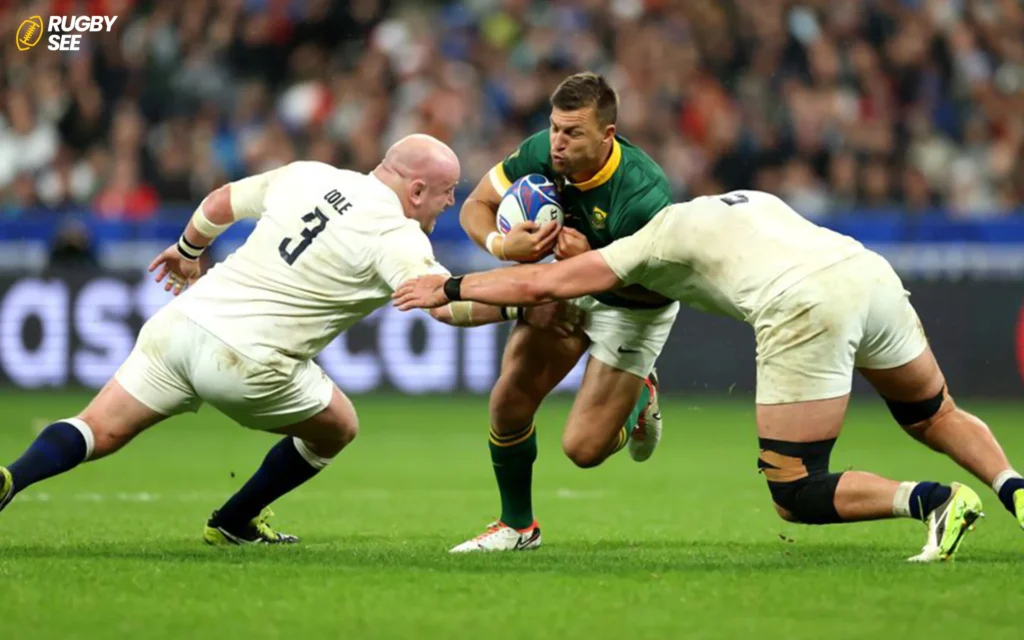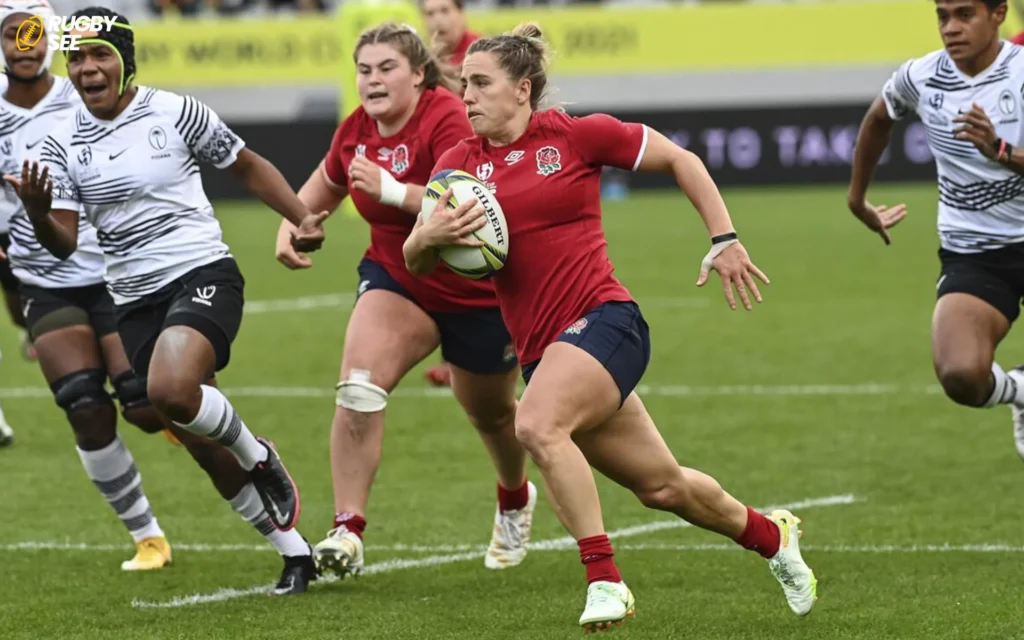When it comes to rugby, every play counts and each rule plays a pivotal role in shaping the strategies and outcomes of the game. One such aspect that brings a unique thrill and tactical layer to rugby is the penalty kick. Often a game-changing moment, penalty kicks in rugby are not just about scoring, but also about psychological warfare, precision, and understanding the nuances of the game’s rules.
What is a Penalty Kick in Rugby?
In rugby, a penalty kick is awarded for various infringements against the laws of the game. These infringements can include offside play, not releasing the ball, playing the ball on the ground, or entering a ruck from the side. When the referee spots such an infraction, they will blow the whistle and award a penalty kick to the non-offending team. The team given the penalty has several options on how to proceed, one of which includes attempting a kick at goal and if you want to know about Haka in Rugby read Why is the haka allowed in rugby.
Scoring Through Penalty Kicks
A penalty kick at goal is one of the key methods of scoring in rugby. Unlike penalty kicks in soccer, which involve a one-on-one situation between the kicker and the goalkeeper, rugby’s penalty kicks can be taken from various angles and distances on the field, depending on where the penalty was awarded. The kicker aims to drive the ball between the two upright posts and over the crossbar of the goal to score three points. This scoring opportunity not only adds points but can also shift the momentum of the game dramatically.

The Strategic Importance of Penalty Kicks
Penalty kicks serve multiple strategic purposes in rugby. They are not only a chance to score but can also be a tactical decision used to exert pressure on the opposing team. Here’s how penalty kicks play a strategic role:
- Field Positioning: Teams might opt to kick for touch (kick the ball out of play) to gain territorial advantage, moving the play closer to the opposing try line.
- Managing the Game Clock: In close games, especially towards the end, teams may use penalty kicks to manage the game clock, controlling the pace and flow of the match.
- Psychological Impact: Successfully scoring a penalty kick can boost the morale of the kicking team while adding pressure on the opponents, potentially causing them to commit more infractions.
How are Penalty Kicks Performed?
Executing a penalty kick requires skill and precision. The kicker must have a strong understanding of wind conditions, the angle of the kick, and the distance to the goalposts. Here’s a general outline of how a player performs a penalty kick:
- Positioning the Ball: The kicker places the ball on the ground, often using a small mound of sand or a specialized kicking tee to hold it in position.
- Approach and Kick: The kicker takes a number of steps back and to the side to create an angle for their run-up. They focus on striking the ball cleanly and with enough power to reach the goalposts, all while maintaining accuracy.
- Follow Through: Like in golf or baseball, a good follow-through is crucial for maintaining the direction and stability of the kick.
The Rules Governing Penalty Kicks
Rugby’s rules ensure that penalty kicks are taken fairly and within the spirit of the game. Here are a few key rules:
- Players must kick the ball from the ground; it cannot be scooped or thrown into the air before kicking.
- The kick must be taken from the point where the infraction occurred or as close to it as practical, directly towards the opponents’ goal line.
- All opposing players must be at least 10 meters away from the ball until it is kicked.
Training and Preparing for Penalty Kicks
For rugby players, mastering penalty kicks is a crucial part of training. It requires a blend of technical skill, mental toughness, and consistent practice. Coaches often emphasize the importance of routine; kickers practice hundreds of penalty kicks during training sessions to refine their technique and build muscle memory. This preparation is key to performing under pressure during crucial moments in a game.

The Role of the Kicker
The player responsible for taking penalty kicks plays a critical role within the team. Typically, this player possesses excellent kicking skills and is often referred to as the fly-half or fullback. Their ability to handle pressure, make quick decisions, and execute accurate kicks can significantly influence the outcome of the match. The kicker’s mental resilience is as important as their physical skill, as they must remain focused despite the intense atmosphere and high stakes of match situations.
Varieties of Penalty Kicks
While the most recognized form of a penalty kick is the direct kick at goal, rugby offers other strategic uses of the penalty:
- Kick for Touch: Instead of kicking at goal, players may kick the ball into touch (out of bounds) to gain territorial advantage. This option is particularly useful when a team feels confident about their lineout play, allowing them to regain possession close to the opponent’s try line.
- Quick Tap: Sometimes, instead of kicking, players take a quick tap penalty, where they tap the ball with their foot and run or pass immediately. This can be effective against unorganized defenses, especially when close to scoring areas.
The Psychological Game
The psychological aspects of penalty kicks can’t be overstated. For the kicking team, there’s a psychological boost when points are secured, especially from long range or in critical moments. Conversely, the defending team might feel the psychological pressure increase, potentially leading to more mistakes or penalties.
Famous Penalty Kicks in Rugby History
Rugby history is rich with moments where penalty kicks have decided the outcomes of critical matches. For instance, Jonny Wilkinson’s famous drop goal in the 2003 World Cup final, although not a penalty kick, underscores the importance of kicking skills in rugby. However, many games, particularly those tight matches in the Six Nations or The Rugby Championship, have been decided by crucial penalty kicks, making heroes out of kickers who had the composure to convert under pressure.

Community and Culture
In rugby, penalty kicks are more than just a means to score points; they are a pivotal part of the game that involves strategy, skill, and psychological warfare. Understanding the nuances of penalty kicks and the impact they have on the game enhances the viewing experience and appreciation for the sport. Whether you are a player, coach, or a fan, the dynamics of penalty kicks offer a deep insight into the strategic fabric of rugby, making it one of the most exciting aspects of this globally beloved sport and if you want to know about Powerlifting in Rugby read Is powerlifting good for rugby?
Penalty kicks in rugby are a fascinating blend of precision, strategy, and sportsmanship. Whether used to claw back into the game or to cement a lead, each kick carries high stakes and can often be the highlight of a match. Understanding the impact and proper execution of penalty kicks not only enhances appreciation of the sport but also underscores the complexity and depth that rugby offers as a global sport.










